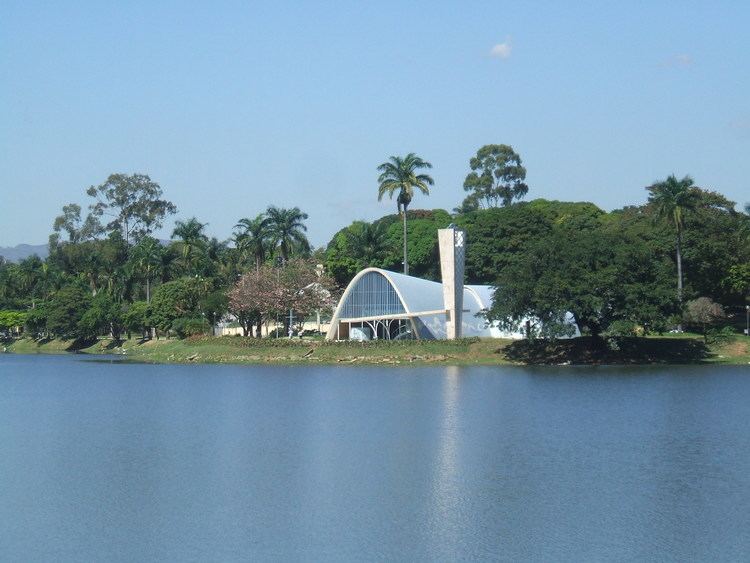Lake type Artificial Max. depth 16 metres (52 ft) | Average depth 5 metres (16 ft) Architectural style International Style | |
 | ||
Surface area 2.6 kilometres (1.6 mi) Water volume 14,000,000 cubic metres (18,000,000 cu yd) Similar | ||
Capybaras at lake pampulha belo horizonte brazil
Lake Pampulha (Portuguese: Lagoa da Pampulha, [pɐ̃ˈpuʎɐ]) is an artificial lake located in Pampulha, Belo Horizonte, Brazil. It is also the name of an administrative region (região administrativa) of Belo Horizante, and the name of one of 29 neighborhoods (bairros) within the administrative region of the same name. The lake was built in the early 1940s during the mayoralty of Juscelino Kubitschek, later president of Brazil from 1956 to 1961. Pampulha was created as a source of water for the city of Belo Horizonte, but quickly became polluted.
Contents
- Capybaras at lake pampulha belo horizonte brazil
- Bike antoine charles e pampulha lake
- Landmarks
- Environmental conditions
- References
Lake Pampulha covers 2.6 kilometres (1.6 mi), has a volume of 14,000,000 cubic metres (18,000,000 cu yd), and a drainage basin of 97 square kilometres (37 sq mi). It has a mean depth of 5.1 metres (17 ft) and reaches a maximum depth of 16 metres (52 ft). The lake is fed by 8 small streams, the largest being the Sarandi and Ressaca. 424,000 residents live in the catchment area of the lake.
Bike antoine charles e pampulha lake
Landmarks
Many of Belo Horizonte's cultural landmarks are located around or close to the lake, including the Federal University of Minas Gerais, the soccer stadium Mineirão, the Mineirinho Arena, the Church of Saint Francis of Assisi (designed by Oscar Niemeyer) and the Museum of Modern Art.
Kubitschek called on the architect Oscar Niemeyer to design a series of buildings around Lake Pampulha in 1941. These include the Church of Saint Francis of Assisi, the Art Museum, the Casa de Baile ("house of dance", in a loose translation) and the Tennis Club. The Burle Marx gardens, paintings by Portinari and sculptures by Ceschiatti, Zamoiski and José Pedrosa complete and enhance the project conceived for the lake. The group of buildings and artwork became a reference point for the development of modern Brazilian art and architecture. In July 2016 the buildings designed by Niemeyer were named a UNESCO World Heritage site. Today these buildings offer visitors the chance to see the 'birth' of modernism in Brazil, as Neimeyer's concepts and use of reinforced, curved concrete became a hallmark of the modernist movement around the world.
By the side of the lake are a number of leisure facilities such as the Governor Magalhães Pinto Stadium (better known as "Mineirão"), the Mineirinho gymnasium, the Botanical Gardens, the Zoo, the Ecological Park, the Equestrian Centre and tracks for cycling and walking.
Environmental conditions
Lake Pampulha suffers from pollution due to rapid urbanization of the catchment area, the discharge of untreated sewage from the surrounding neighborhoods in Belo Horizonte, and unabated erosion in many points of the drainage basin. Cyanobacterial blooms are a frequent occurrence.
